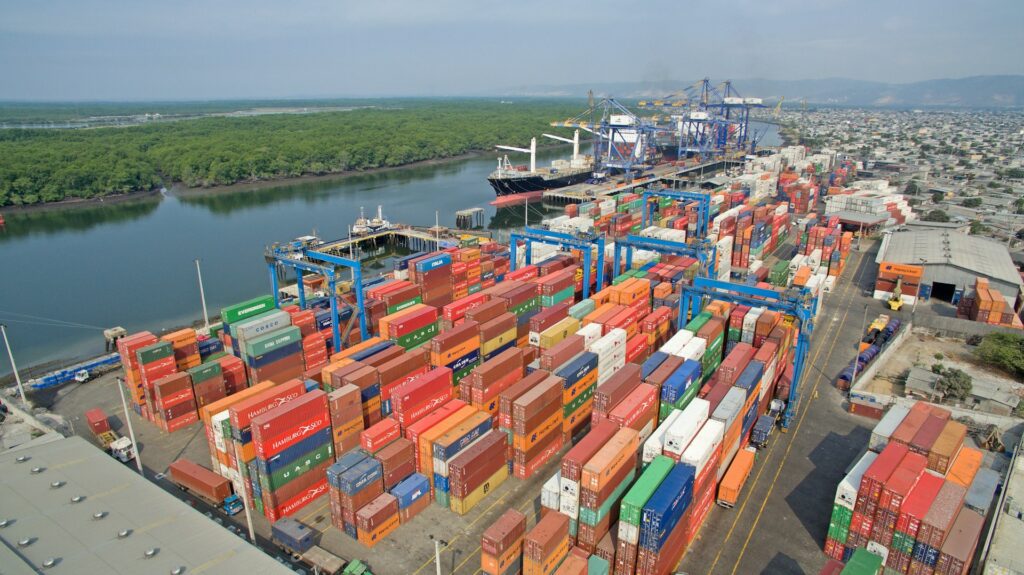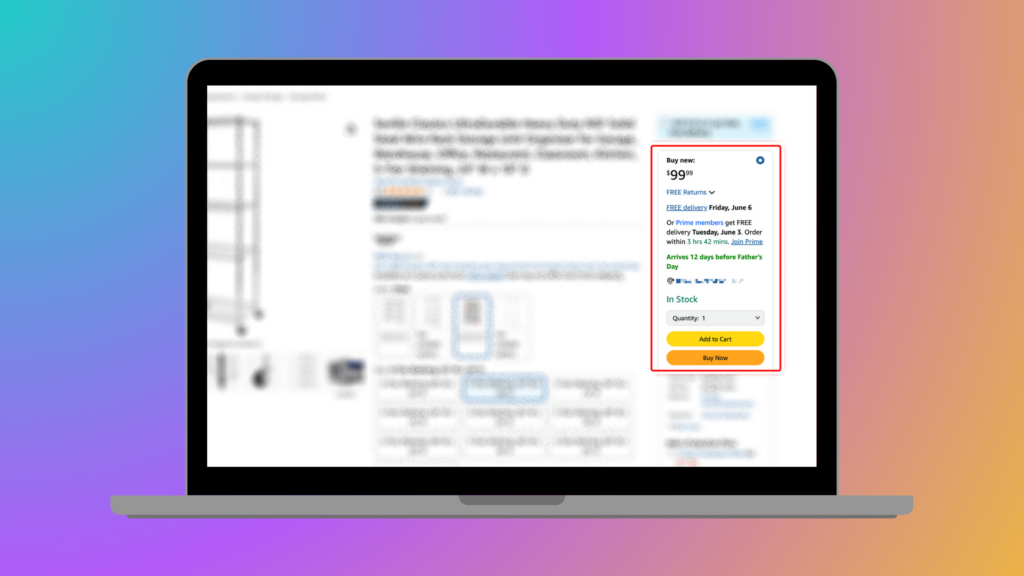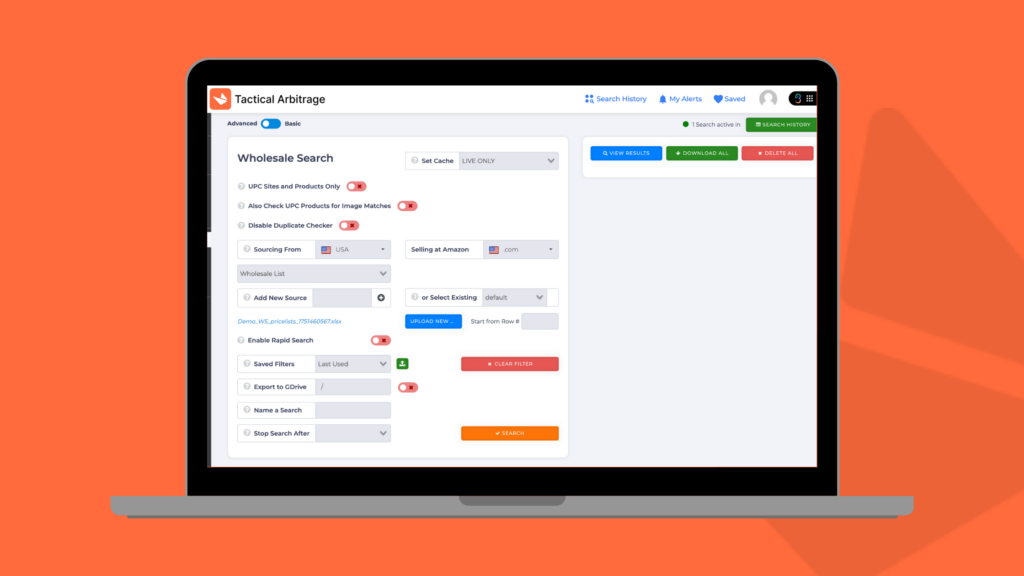- Blog
-
For Sellers
What does the US import from China? Statistics to know in 2025
Want to know which top import categories from China are still winning in 2025? Start here.

Walk through any store in America and flip over a random product. Chances are, you’ll see those three familiar words: “Made in China.” The same goes for Amazon, where over 50% of marketplace sellers are China-based. Even with all the political drama and new tariffs, this relationship isn’t going anywhere.
The numbers tell the story. US imports from China hit $438.9 billion in 2024, up 2.8% from the previous year. The goods trade deficit reached $295.4 billion, climbing 5.8% from 2023. And early 2025 data shows imports bouncing back after a slight Q4 2024 dip, proving that American demand for Chinese goods remains strong.
This guide breaks down the top 10 import categories from China, reveals the real profit margins, and shares proven strategies for navigating the new landscape.
Top 10 US imports from China
1. Electrical machinery & electronics
Leading the pack at $124 billion in 2025, this category includes everything from smartphones to charging cables. China dominates through its massive manufacturing infrastructure in Shenzhen and surrounding tech hubs.
Profit margins range from 15-40%, with accessories delivering better returns than core devices. A basic phone case that costs $2 to import can sell for $15-20 on Amazon. The sweet spot lies in branded accessories for trending devices like the iPhone 16.
Pro tip: Watch out for the new tariffs on lithium batteries and chip components that kicked in March 2025. These added costs can eat into margins if you’re not careful with pricing.
2. Machinery
At $85 billion, machinery imports cover everything from HVAC systems to manufacturing tools. China’s efficiency in producing both heavy and precision machinery keeps prices competitive for B2B resellers. Their factories can scale production quickly while maintaining quality standards.
Margins typically run 10-25% for B2B resellers, but refurbished tools can push higher. The real money comes from finding niche tools for specific maintenance markets. Think specialized automotive diagnostic equipment or industrial cleaning machines.
The challenge? Higher shipping costs and import taxes on bulky items can squeeze profits. Factor in LTL freight costs before committing to large machinery imports.
3. Furniture and bedding
This $21 billion category thrives on ready-to-assemble furniture and creative storage solutions. Chinese manufacturers excel at producing flat-pack designs that ship efficiently. They’ve mastered the art of turning particle board and veneer into Instagram-worthy furniture.
Direct-to-consumer brands see margins of 25-60% using flat-pack shipping models. Mid-century modern designs and space-saving furniture for small apartments consistently perform well. A $50 imported desk can retail for $150-200 with the right branding.
Pro tip: Bulk matters here. Higher LTL freight costs due to size mean you need to calculate shipping carefully. One damaged shipment can wipe out profits from several successful orders.
4. Toys, games, and sports equipment
Worth $32 billion in imports, China’s toy manufacturing clusters in Yiwu and Chenghai pump out everything from STEM kits to collectibles. These regions have specialized in plastics, electronics, and plush toys for decades. Their supply chains can pivot quickly to match trending products.
Margins range from 30-70% on trending items. STEM toys and sensory products for special needs kids command premium prices. Licensed merchandise moves fast but requires proper authorization to avoid legal issues.
Pro tip: Safety regulations got stricter in 2025. New labeling requirements for children’s products mean extra compliance steps. So, budget for third-party testing to avoid customs delays or Amazon account suspensions.
5. Apparel
At ~$7 billion, China’s vertical integration from fabric to finished product keeps them competitive. They can handle everything from small custom batches to massive fast-fashion runs. This flexibility makes them ideal for private-label fashion brands testing new designs.
Profit margins hit 30-65% depending on your niche and branding strength. AI-driven trend forecasting helps sellers catch waves early. A $8 imported dress can sell for $30-40 with decent photography and marketing.
Pro tip: Labor scrutiny increased following Xinjiang-related policies. Ensure your suppliers can prove their supply chain compliance to avoid shipment seizures.
6. Plastics and plastic articles
This $21 billion category covers containers, packaging, and household items. Chinese factories excel at bulk production of everyday plastic goods. From food storage to garden supplies, they’ve cornered the market on affordable plastic products.
Margins range from 20-50% based on product size and application. Kitchen organizers and storage solutions consistently sell well. Eco-friendly alternatives like biodegradable plastics command premium prices as consumers become more environmentally conscious.
Pro tip: Environmental compliance pressures keep increasing. States like California have strict plastic regulations that affect what you can sell. Research local laws before importing.
7. Optical and medical instruments
At ~$12 billion, this category includes diagnostic devices, glasses, and home health monitors. China has built a strong base in producing affordable medical devices for both consumers and clinics. Their factories can manufacture precise instruments at scale.
Expect margins of 15-40%, higher in niche wellness markets. Home health monitoring tools like smart thermometers and blood pressure monitors sell well. The telehealth boom created sustained demand for consumer medical devices.
Pro tip: FDA pre-approval can delay launches by months. Start the certification process early and budget for compliance costs. Some products require extensive documentation before import.
8. Vehicles and auto parts
Worth $18 billion, Chinese manufacturers specialize in aftermarket parts and electric vehicle components. They’ve become the go-to source for everything from LED headlights to brake systems. The rise of EVs opened new opportunities for battery and charging accessories.
Margins run 20-45% depending on the segment. Even a $20 LED light kit can retail for $60-80 with proper marketing.
Note: Section 301 tariffs now cover more automotive parts. The 25% tariff on many items requires careful margin calculation to maintain profitability.
9. Footwear
At $10 billion, China remains the global hub for shoe production. From work boots to designer knockoffs, their factories can produce any style at scale. Automated production lines keep costs low while maintaining consistent quality.
Private-label brands see 35-60% margins. Comfort footwear and orthopedic styles command premium prices. A $15 pair of imported shoes can retail for $40-60 with decent branding.
Note: The tariff rate for shoes jumped in April 2025 as well. This significant increase requires strategic pricing to maintain a competitive advantage while preserving margins.
10. Iron and steel products
Rounding out the top 10 at $13 billion, steel products serve mostly wholesale and industrial applications. China’s massive steel mills and fabrication capacity keep them dominant despite trade tensions. They excel at producing everything from raw steel to finished construction hardware.
Margins typically hit 10-20%, mostly in wholesale deals. Prefabricated construction hardware offers opportunities for smaller sellers. Focus on specialized items rather than commodity steel.
Note: Section 232 and Trump 2.0 tariffs hit this category hard. The additional costs make careful supplier selection and pricing crucial for maintaining profitability.
Best practices for importing from China
Find reliable suppliers
Start with verified directories like Alibaba Gold Suppliers, GlobalSources, or Made-in-China. Request their business license, export license, and relevant certifications like ISO, CE, or FCC. A legitimate supplier won’t hesitate to provide documentation.
Watch for red flags. Pricing far below market rates often signals quality issues or scams. Suppliers who avoid business emails and prefer personal WhatsApp for all communication raise concerns. Anyone refusing sample orders or video calls probably isn’t worth your time as well.
Finally, always place a sample order before committing to full production. Spend $50-300 to validate product quality, packaging accuracy, and communication reliability. Some suppliers offer free samples if you cover shipping. This small investment can save thousands in bad inventory.
Calculate your true costs
Your total landed cost includes more than the product price. Add shipping, customs duties, and handling fees to get the real number. Use the HTS code system at hts.usitc.gov to find your exact tariff rate.
Hidden fees add up quickly. Bank wire transfers cost $20-50. Port handling fees vary by location. Commercial imports over $2,500 require a customs bond. Amazon FBA prep fees or 3PL receiving charges pile on if you’re not shipping directly. Factor in inspection fees for regulated goods.
Here’s a simple ROI formula:
| [(Sale Price – Landed Cost – Ad Spend) / Landed Cost] × 100 |
Aim for a minimum of 30-50% ROI to buffer against tariff changes and advertising costs. This cushion protects you when unexpected costs arise.
Ship smart
Sea freight offers the cheapest per-unit cost but takes 20-45 days. It works best for furniture, tools, and large restocks.
Air freight costs more ($5-15/kg) but arrives in 3-10 days. Use it for lightweight, urgent items or testing new products.
Direct-to-FBA shipping using DDP (Delivered Duty Paid) service simplifies logistics. Your supplier handles customs and delivers straight to Amazon’s warehouse. Make sure they understand Amazon’s requirements for FNSKU labels, polybagging, and box dimensions.
Timing matters more than most sellers realize. Production takes 2-6 weeks, depending on complexity. Chinese holidays like the New Year and Golden Week can delay orders by 2-3 weeks. October through January sees peak congestion. Plan inventory around these known delays.
Stay compliant
Different products require different certifications. Electronics need FCC approval. Electrical items require UL certification. Toys must meet CPSIA standards. Kitchen items and cosmetics need FDA clearance. Request lab testing reports from suppliers or conduct your own through SGS or Intertek.
Know the restricted products list. Obvious items include counterfeit goods, firearms, and drugs. Less obvious restrictions cover products involving forced labor, particularly Xinjiang cotton, banned under the Uyghur Forced Labor Prevention Act. Food and beverages need FDA clearance before import.
Keep your paperwork straight. Mandatory documents include a commercial invoice, a packing list, a bill of lading, a certificate of origin, and a customs bond for shipments over $2,500. Add product testing reports and insurance certificates for high-value goods. FDA-regulated items need registration and prior notice.
Final thoughts
China remains America’s manufacturing powerhouse, supplying everything from smartphones to steel. The billion-dollar import relationship continues growing despite tariffs and political tensions. So, smart sellers can still find profitable opportunities across all ten major categories.
Just remember that success requires understanding true landed costs, finding reliable suppliers, and staying compliant with regulations. The new 10-25% tariffs change the math but don’t eliminate the opportunity. Focus on products with healthy margins and sustainable demand.
Looking to streamline your Amazon selling operations? Seller 365 brings together 10 essential tools in one affordable bundle, helping sellers save time and increase profits. Start your free trial today and see why thousands of sellers trust Threecolts to power their business.






















